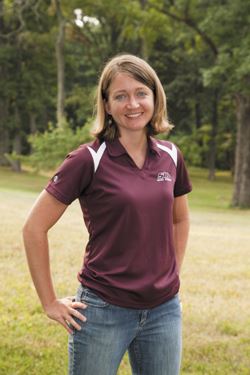|
Tillage/Fertility Connections
A 44-Year Study Sheds Light On Methods Impact On Yield
BETTY VALLE GEGG-NAEGER
MidAmerica Farmer Grower
DIXON SPRINGS, ILL.
How different tillage practices interact with fertility and yield was addressed by Dr. Rachel Cook, soil fertility professor at Southern Illinois University, recently.
She discussed a 44-year continuously running, long term tillage by fertility trial underway at the Belleville Research Station. It was begun in 1970 by Dr. George Kapusta to determine how different tillage practices interact with fertility for yield.
“The first 20 years of this study were continuous corn and in 1990 it was switched over to a corn/soybean rotation,” she said. “We had several different treatments, including moldboard plow treatment, chisel plow for reduced till, an alternate till treatment, which was two years of no-till, one year of till and then no-till. So this tillage study is particularly important because it is the second longest running study of its kind in the world as far as we know. There’s only one other that’s older than this and that’s in Ohio.”
Along with those tillage treatments several fertility treatments were also used. One control had no fertility on it for 44 years and there also was a nitrogen-only treatment. Three different NPK treatments (nitrogen, phosphorus and potassium) were also used.

Dr. Rachel Cook, soil fertility professor at Southern Illinois University, discussed a
fertility trial underway and how different tillage practices interact with fertility and yield.
Photo by John LaRose, Jr.
“Originally they were looking at starter fertilizer treatments and some different splits. Then they figured out about 20 years running that starter fertilizer didn’t really do anything, so those all got combined into just a broadcast NPK treatment,” Cook said.
“Nitrogen is in the form of urea, and it used to be ammonium nitrate, P&K are in the form of triple super phosphate and potash. All those are crossed, replicated so it’s a really wonderful design,” she explained. “This is particularly important because a lot of our common knowledge, particularly for no-till, comes from Ohio which is much farther north than us. So many cautions you’ll hear such as – no-till isn’t as good for poorly drained soils, you’ll have a yield drag – it turns out for us in southern Illinois it just isn’t true.”
One thing learned from this long-term study is that in the full fertility treatments, when NPK was used, yield is exactly the same across the board. Regardless of the tillage, you get the same yield. This was a surprise considering this is on a somewhat poorly drained site that’s very flat with no slope.
“We typically think of doing no till on highly erodible ground, and not as many people think of doing no till on flat ground, but you still do get erosion on flat ground,” she said. “So one take away from this is that basically tillage is recreational in this particular study. There was no particular consequence to doing no till on this somewhat poorly drained soil.”
“Another thing we did see is when you add nitrogen only without adding phosphorus and potassium, no till does suffer more than the other tillage practices, so no till is particularly susceptible to fertility,” Cook added. “You have to be very conscientious of putting on your fertility to maintain your yields in no till. That was another important take away.”
Many soil samples were taken and there was much scrutiny of the soil fertility on the site over the years. One surprise, according to old calculations for phosphorous and potassium according to the Illinois agronomy handbook, showed too little P was used and enough K. It looked like the fertility was right, but when the soil tests returned they showed that although the phosphorus levels have come down over time they’re still fine.
“However, potassium levels, the soil test K became deficient,” she asserted. “So even though we were putting on the recommended amount, over time we’re starting to see potential deficiencies. It might be we’re starting to see yields coming down over the last 20 years because we split the fertilizer in half when we went to a corn/soybean rotation. We’re starting to see that as time has progressed we’re starting to get K deficiencies. So the important take away from this is you just can’t go by recommended fertilizer equations.”
The recommendation is to use this as a guideline but it’s important to still do the soil tests to see what’s going on in your particular soil and your particular soil type. Those recommendations are good guidelines but they’re not the final word.
“You still have to do soil tests in order to keep track of where your soils are to keep from getting unexpected deficiencies,” she summed. “That’s the main wrap up for today.”
Cook is happy to answer email questions on the subject. She expects the study to continue on with 44 years, to 45 and 46 years. ∆
BETTY VALLE GEGG-NAEGER: Senior Staff Writer, MidAmerica Farmer Grower
|
|